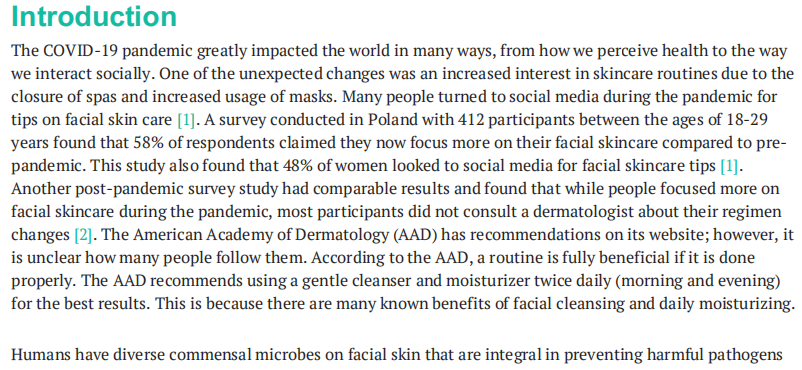
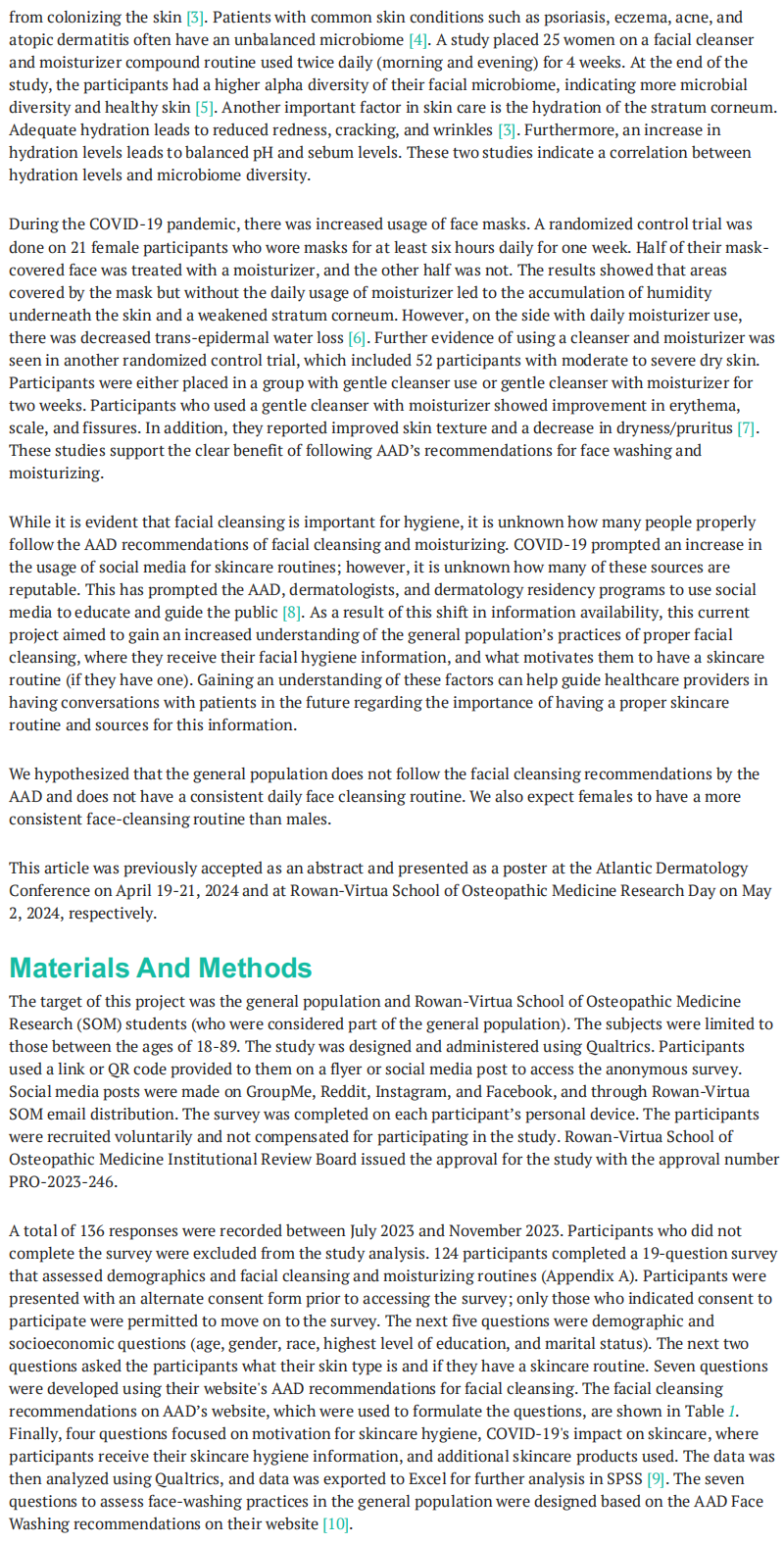
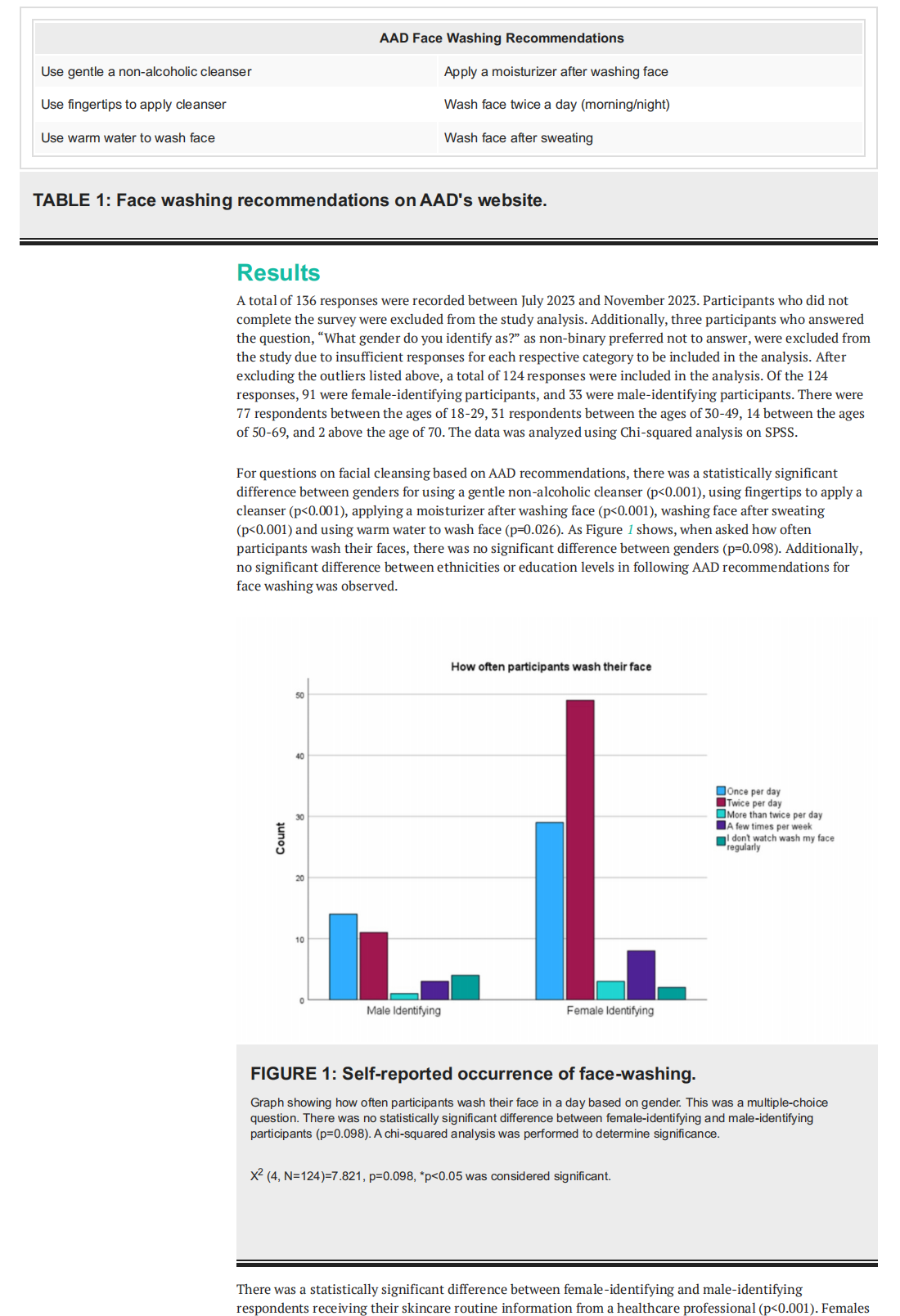

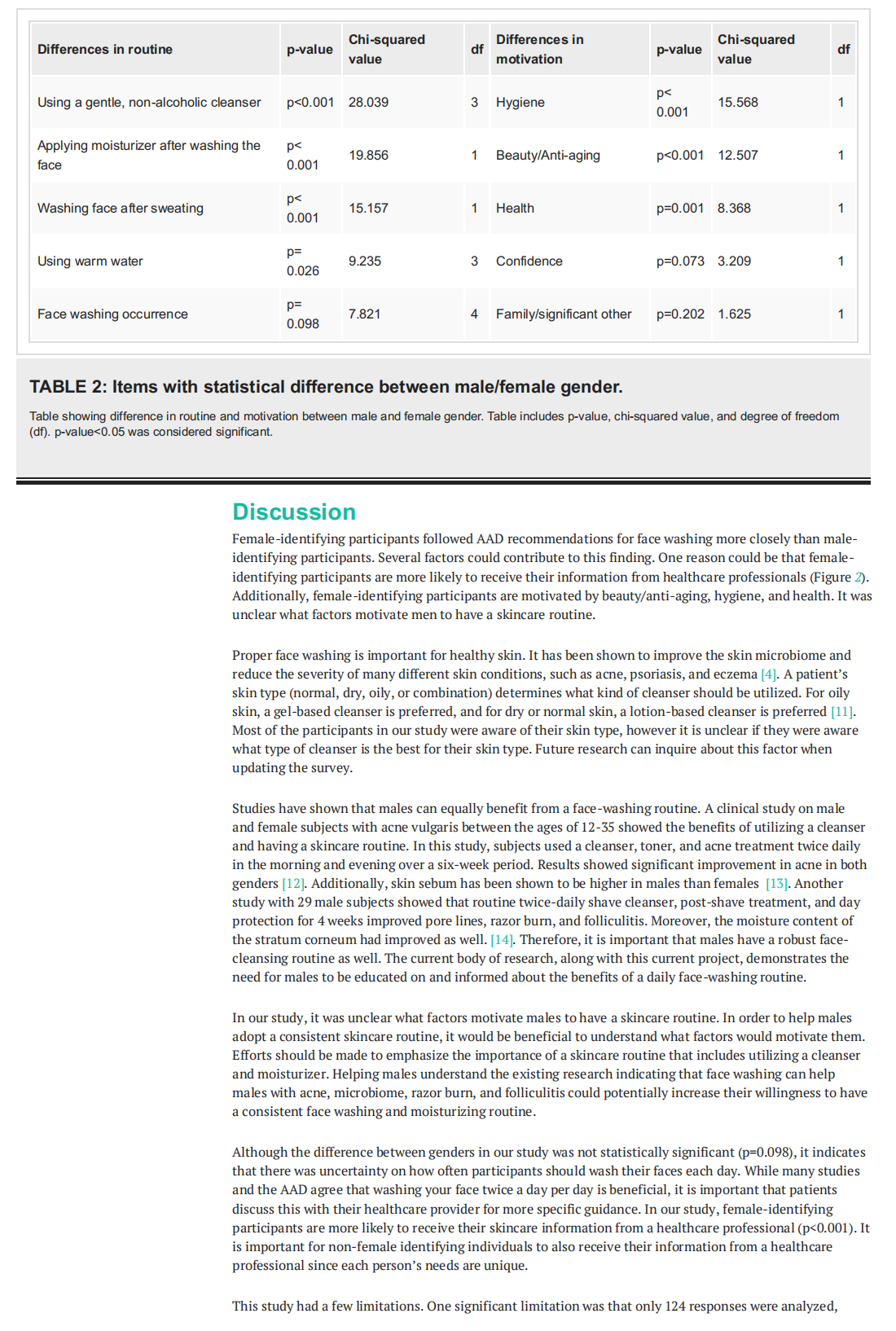
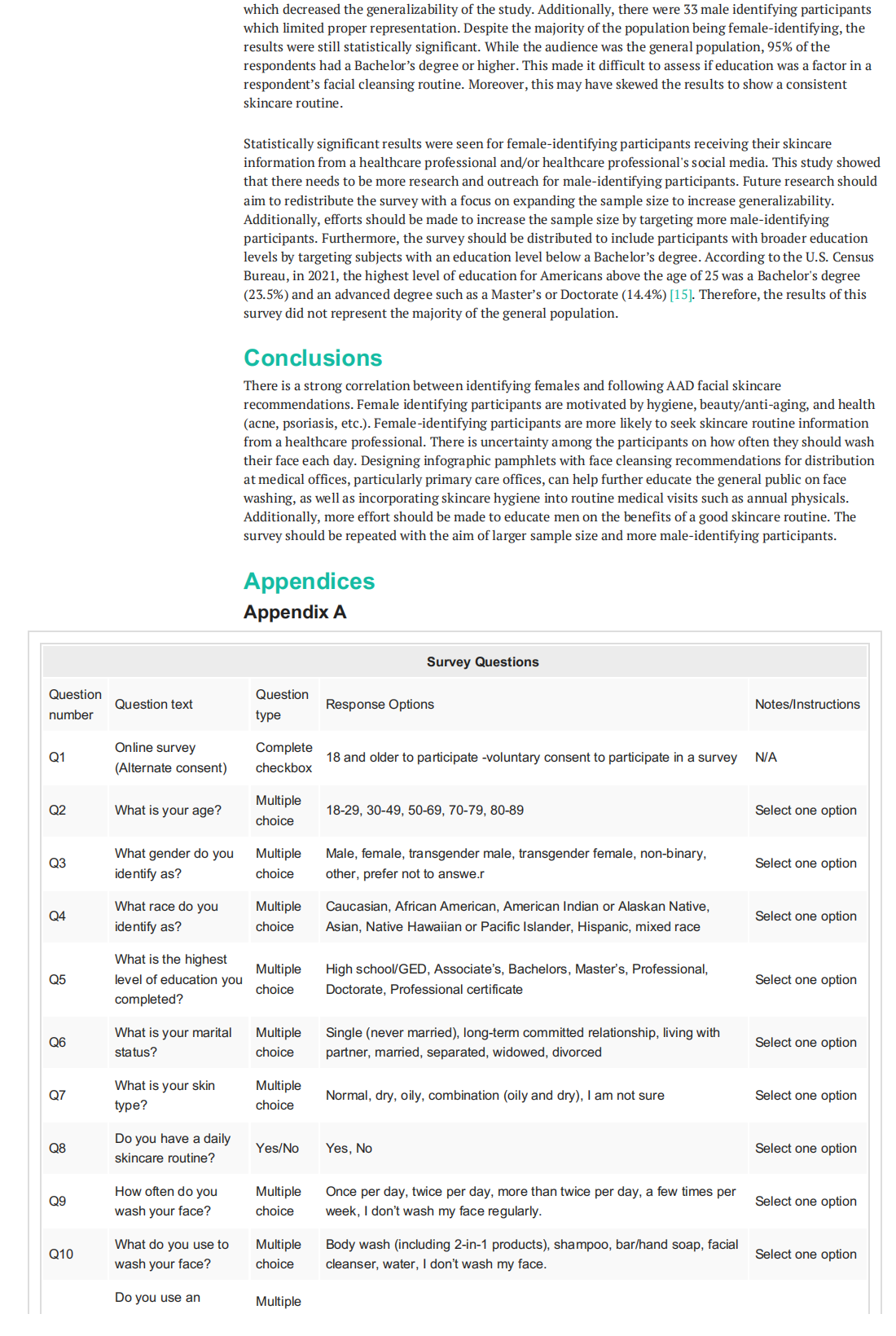
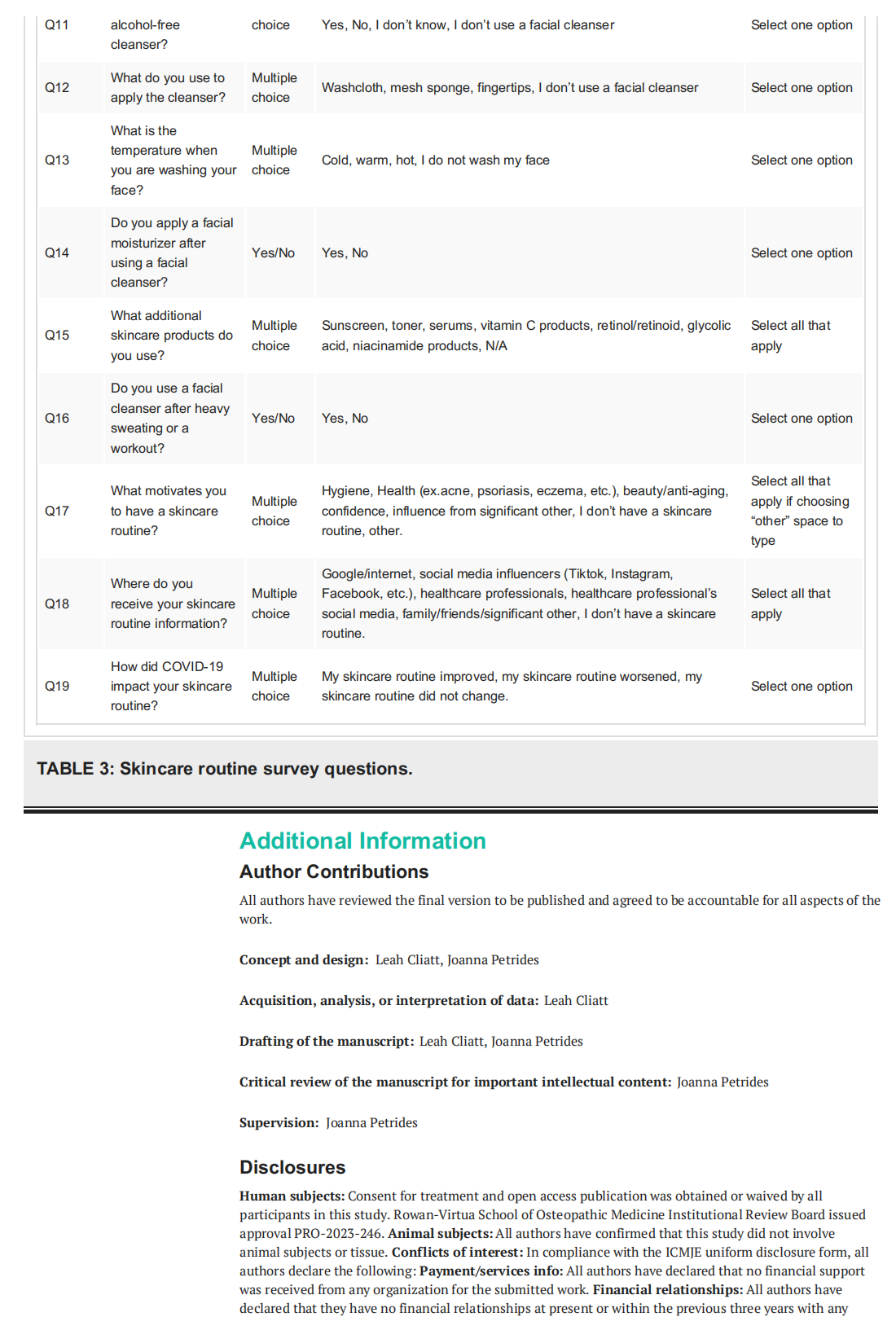
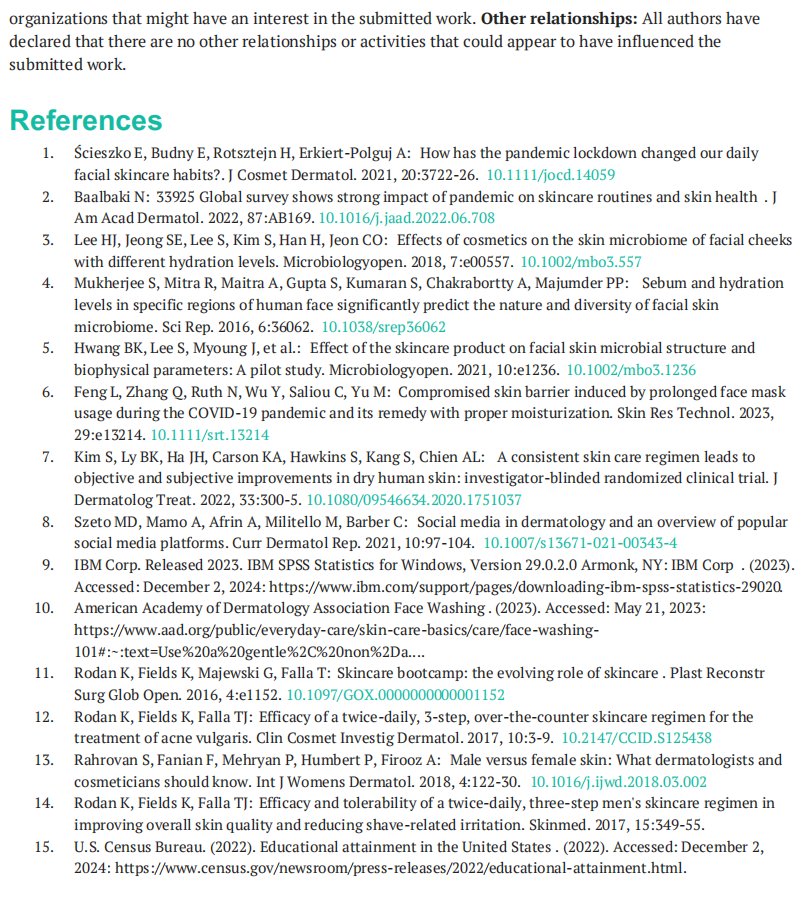
This article is excerpted from the Cureus. 2024 Dec 16;16(12):e75810 by Wound World.
Leah Cliatt , Joanna Petrides
Corresponding author: Leah Cliatt, 该Email地址已收到反垃圾邮件插件保护。要显示它您需要在浏览器中启用JavaScript。
Abstract
Introduction
The COVID-19 pandemic sparked an interest in skincare with the closure of spas and salons. Skincare, one of TikTok's most popular dermatology-related hashtags, received hundreds of millions of views. The American Academy of Dermatology (AAD) sharedfacial cleansing recommendations; however, how many people follow them is unclear. Studies have shown a good daily facial cleansing andmoisturizing routine can increase microbiome diversityand skin hydration. This can be beneficial in conditions like psoriasis, eczema, and acne.
Purpose
The aim of the study is to assess how well people follow the AAD recommendations and evaluate any differences in this behavior by gender.
Methods
A 19-question survey was designed and administered utilizing Qualtrics. The questions included demographic information, facial cleansing practices, and motivation for skincare routine. The survey was distributed via Rowan Email and on various social media platforms (GroupMe, Instagram, etc.) to target the general population. The data was analyzed using SPSS.
Results
One hundred twenty-four responses were collected from 91 female-identifying and 33 male-identifying participants. There were statistically significant differences between genders for the use of non-alcoholic gentle cleanser (p<0.001), use of moisturizer after washing the face (p<0.001), washing the face after sweating (p<0.001), and using warm water (p=0.026). No statistically significant difference was seen for face washing occurrence between genders (p=0.098). Statistically significant differences were seen between genders for motivation: hygiene (p<0.001), beauty/anti-aging (p<0.001), and health (p=0.004).
Conclusion
Individuals who identify as female may be more likely to adhere to AAD facial skincare recommendations. This could be a result of self-reported motivations such as hygiene, beauty, and health.
Categories: Dermatology
Keywords: beauty, dermatologic agents, dermatology, face cleansing, face washing, female, hygiene, skin
Review began 11/19/2024
Review ended 12/12/2024
Published 12/16/2024
© Copyright 2024
Cliatt et al. This is an open access article distributed under the terms of the Creative Commons Attribution License CC-BY 4.0., which permits unrestricted use, distribution, and reproduction in any medium, provided the original author and source are credited.
DOI: 10.7759/cureus.75810








This article is excerpted from the Cureus. 2024 Dec 16;16(12):e75810 by Wound World.
